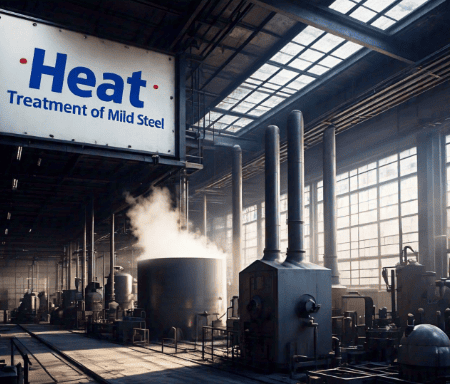What is Heat Treatment?
Heat treatment is a controlled process of heating and cooling metals to alter their microstructure and achieve desired properties. This process can involve heating, holding, and cooling the metal to specific temperatures, depending on the desired outcome.
Heat Treatment Processes for Mild Steel
Several heat treatment processes can be applied to mild steel, including:
- Annealing: Annealing involves heating mild steel to a temperature between 850°C to 950°C, followed by slow cooling. This process reduces hardness, increases ductility, and relieves internal stresses.
- Normalizing: Normalizing is similar to annealing, but the cooling process is faster. This process is used to refine the grain structure, reduce hardness, and improve machinability.
- Hardening: Hardening involves heating mild steel to a temperature between 760°C to 820°C, followed by rapid cooling (quenching). This process increases hardness, but reduces ductility.
- Tempering: Tempering is a process used to reduce the hardness of hardened steel. It involves heating the steel to a temperature between 150°C to 650°C, followed by slow cooling.
- Case Hardening: Case hardening involves heating the surface of mild steel to a high temperature, followed by quenching. This process creates a hard, wear-resistant surface layer.
Benefits of Heat Treatment for Mild Steel
Heat treatment can significantly enhance the properties of mild steel, including:
- Increased strength: Heat treatment can increase the yield strength and tensile strength of mild steel.
- Improved ductility: Annealing and normalizing can improve the ductility of mild steel, making it more suitable for forming and machining.
- Enhanced wear resistance: Case hardening and hardening can improve the wear resistance of mild steel, making it more suitable for applications involving friction and abrasion.
- Reduced internal stresses: Annealing and normalizing can reduce internal stresses in mild steel, making it more stable and less prone to warping or cracking.
Applications of Heat-Treated Mild Steel
Heat-treated mild steel is widely used in various industries, including:
- Construction: Heat-treated mild steel is used in building frames, bridges, and other structural applications.
- Automotive: Heat-treated mild steel is used in car bodies, engine components, and other automotive parts.
- Aerospace: Heat-treated mild steel is used in aircraft and spacecraft components, where high strength and low weight are critical.
- Machine building: Heat-treated mild steel is used in machine components, such as gears, shafts, and bearings.
Conclusion
Heat treatment is a powerful process that can significantly enhance the properties of mild steel. By understanding the different heat treatment processes and their benefits, engineers and manufacturers can select the most suitable process for their specific application. Whether it's annealing, normalizing, hardening, tempering, or case hardening, heat treatment can help unlock the full potential of mild steel.

